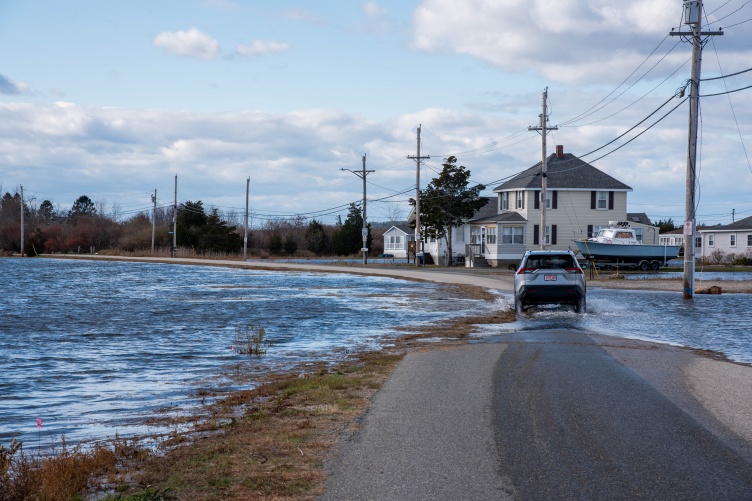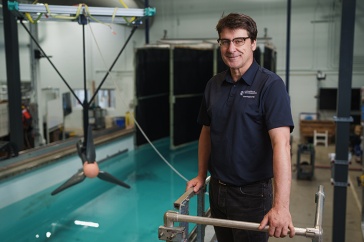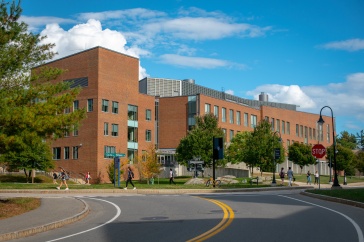
Hampton Beach sees regular impacts of sea level rise on its roads. Photo by Tim Briggs/NH Sea Grant.
After a summer of high heat, intensely destructive hurricanes, constant flooding and steady sea level rise, coastal roads have taken a beating, threatening their ability to transport people, goods and services. With a new $1.8 million National Oceanic and Atmospheric Administration (NOAA) grant, UNH researchers will study how and why coastal hazards like excessive flooding are causing roads to fail and how to protect this critical infrastructure.

“We’re trying to better understand the causal links of not only the extreme events but also the gradual changes in sea level rise that can increase the rate of damage to pavement and trigger failures that require major road reconstruction,” says Jo Sias, professor of civil and environmental engineering. “We’re looking at storm surges and wave action but also factors like the amount of time the pavement is under water.”
The focus of the project is to understand the combined hazards of overtopping and subsurface moisture — flooding from above and below the road. UNH researchers, including civil and environmental engineering professor Jennifer Jacobs and associate professor Eshan Dave, and their partners at the University of South Alabama and the Rockingham Planning Commission will develop a number of hydrodynamic models that can analyze fluids in motion. They will use new data collected in the field as well as historical information to create high-resolution models to study groundwater and pavement as well as perform an adaptation impact assessment to develop a toolkit to help assess the vulnerability of roadways to flooding hazards.
“Improving coastal roads to withstand the increasing water hazards is important not only for transportation and the people who live there but also for the overall economy and ecosystems in the area.”
Researchers say that while engineers have investigated these impacts independently, an approach is needed that combines the different effects to better evaluate options when it comes to pavement alternatives. This information will be valuable to state and town officials to assess the impact of sea level rise on the longevity of coastal roadways and help implement practical alternatives for communities to protect the infrastructure.
“It’s important to prioritize and share this information so we can create important decision-making tools, identify institutional barriers and develop policies needed to update state transportation agency coastal resilience practices,” says Sias. “Improving coastal roads to withstand the increasing water hazards is important not only for transportation and the people who live there but also for the overall economy and ecosystems in the area.”
Taking into account factors like climate change and shifting weather patterns, the study will focus on two geographically and geologically diverse coastal regions — the northeast coast of New Hampshire and the southeast coast of Alabama. The research team will work with key end users to determine adaptation approaches and new management policies and practices for transportation agencies that positively impact surrounding communities.

The grant is part of NOAA’s Effects of Sea Level Rise Program (ESLR), which is based in the National Centers for Coastal Ocean Science (NCCOS). The ESLR provides a suite of science products to inform coastal managers of local coastal vulnerability and solutions to mitigate flood risk. NCCOS delivers ecosystem science solutions for NOAA’s National Ocean Service and its partners, bringing research, scientific information and tools to help balance the nation’s ecological, social and economic goals.
-
Written By:
Robbin Ray ’82 | UNH Marketing | robbin.ray@unh.edu | 603-862-4864
















































